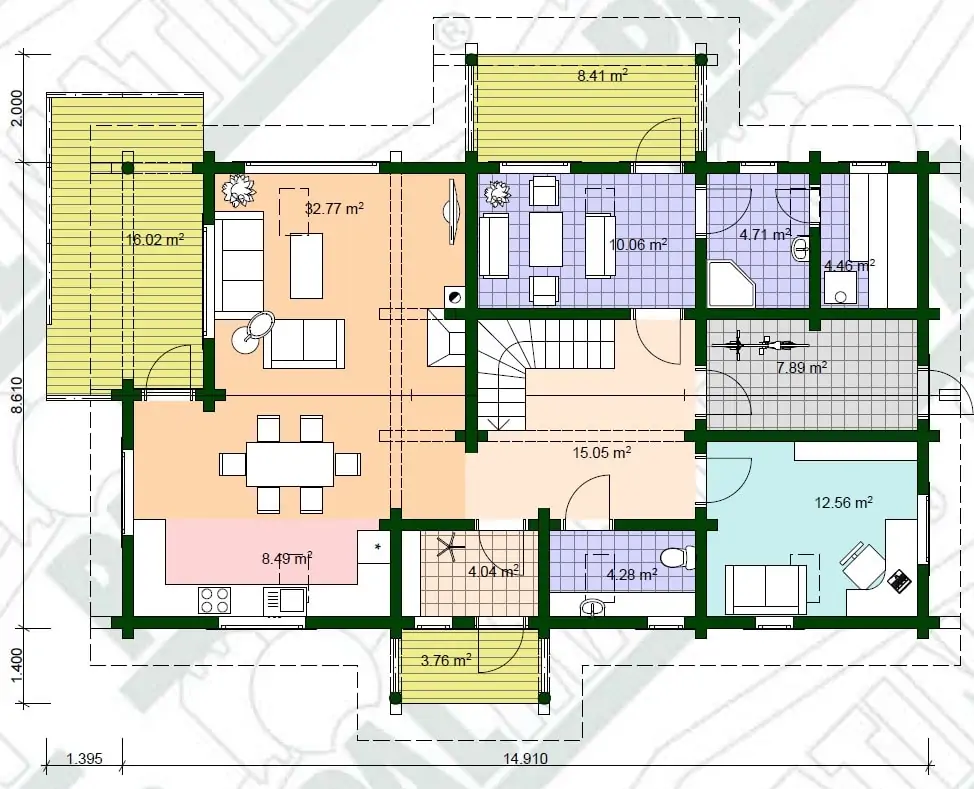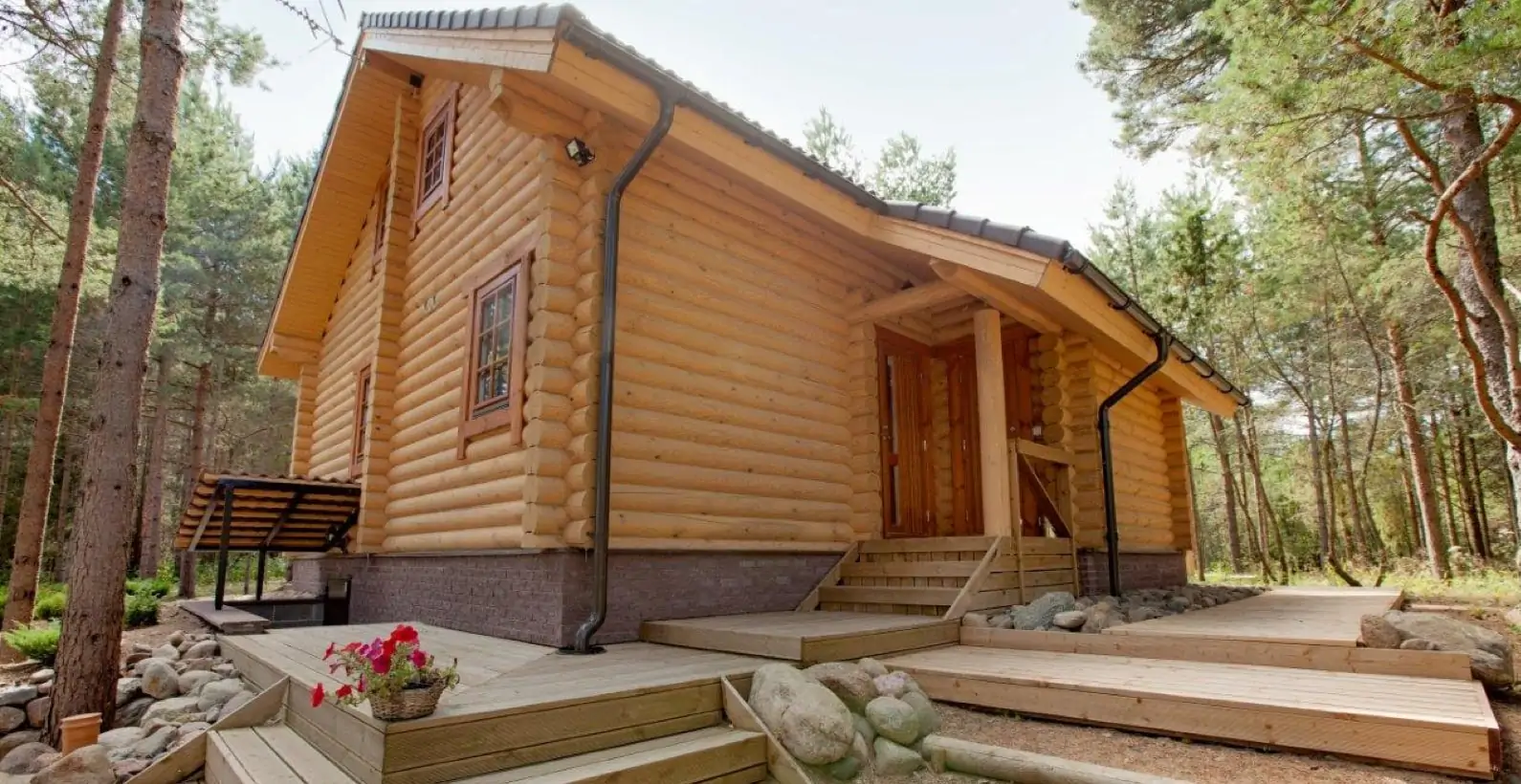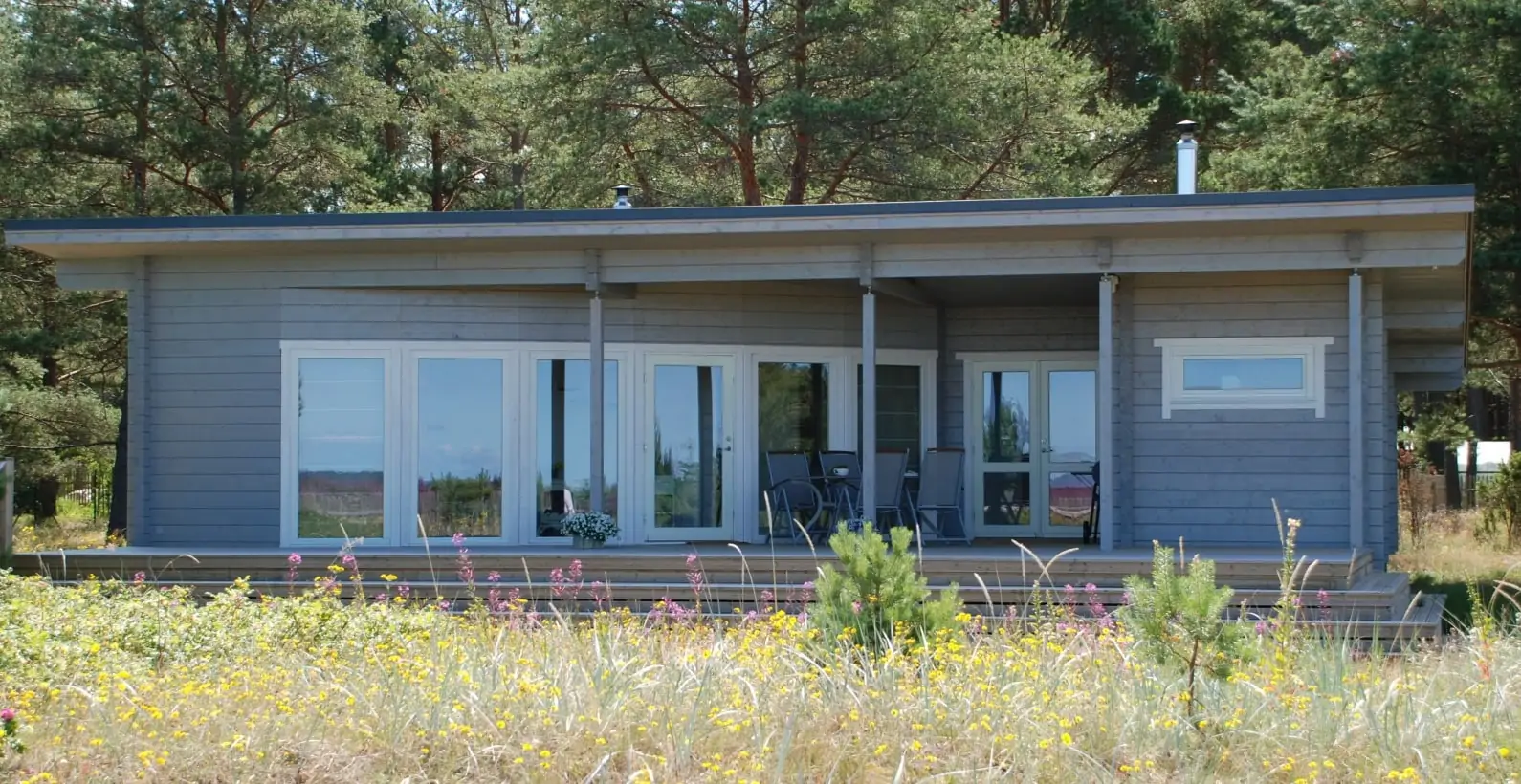
Deiw is a traditional two-storey log house with an open kitchen and living room with a fireplace.
The large terrace can easily fit a dining table or some sun beds. On the ground floor there is a sauna with a bathroom and sitting area, with a second terrace. There is also an extra room (an office) on the ground floor and a storage room for bicycles.
On the first floor there is another bathroom and 3 bedrooms – 2 smaller and 1 master bedroom with a balcony. There is a fourth room on the first floor which could be a 4th bedroom or a guestroom.
Get an instant quote for full price info and details below.
Instant, 3-second price quote!
"*" indicates required fields



We selected Palmatin thanks to fast feedback and informational webpage. There were a lot of house plans and projects. Many other log house companies didn’t offer drawings. We asked price offers from 7 to 8 companies and only received two price offers – one was from Palmatin.

We selected Palmatin because we had already ordered 1 log house previously and we are very satisfied with it.
It is possible to use different stone materials as wall coverings. It is possible to choose from brick, decorative stone, etc. If you use stone as your external wall covering, a special cement board is installed on the prefabricated wall and the stone material will be installed thereupon on the site. In the case of stone covering, a wider foundation must be built to support the wall covering.
It is similar to a stone facade, a special cement board will be installed on the prefabricated walls. The rendering of the facade will take place on the site.
With wooden facade you have many additional options. You may choose between different cladding profiles, types of wood and the manners of treatment of the wood (varnished, painted, impregnated, etc.) Treated wooden cladding will be installed on the prefabricated walls at the factory.
Basic – includes drawings for the log part, log part of the house, T-battens for openings, hydro isolation between the foundation and first log row, wooden dowels, isolation between the logs, special metallic parts and packages to be delivered in the order of assembly. The Basic kit is suitable if you wish to buy only the walls of the house and build the rest of the house yourself.
Standard – in addition to the Basic kit, this kit includes rafters, roof hydro isolation, ventilation slats, sarking, first floor joists, balcony joists, windows, exterior doors and special metallic accessories. The Standard kit is suitable if you wish to get a weatherproof house quickly and then continue with interior works in your own pace.
Premium – in addition to the Standard kit, this kit includes all other wooden materials needed to finish the house, interior doors and a staircase. The Premium kit is the most comfortable kit, including all wooden materials needed to build a house. This is suitable if you wish to finish the house quickly without spending time worrying about the quantity or availability of materials.
Do you have questions about the house or would like to consult about your next project? We'd be happy to answer all your questions!

Jaan Köönvere
+372 605 48 95
At Palmatin, we design the houses and projects in our offices and produced in our factory in Estonia. It can be house models, modified models or clients projects. Our production is local and under control and certifications, ensuring the best quality.
As a log and prefabricated house producer, we value the environment and the nature, quality and durable products. Our goal is to participate to a sustainable future. We provide comfort and value the health of our clients and their satisfaction. We manage our supply and our production with careful attention, and we place our clients at the very heart of our concern.
The cost of the house transportation varies according to different factors, that is why it is established for each project, individually. Generally speaking, the delivery cost depends on the means of transport (maritime transport, ground transport…), the nature, size and quantity of goods, the construction site location. Other factors are included such as the number of kilometres, the insurance…
The cost of foundations is influenced by the type and methods required (swallow, deep, etc…). The materials also influence the price, as well as the size of the house and its features. Usually, the foundation’s cost of a house is situated between 100 to 1000€ / m3 depending on the needs. To have a more precise estimation of the foundation’s cost for your project, you can request quotations to experts.